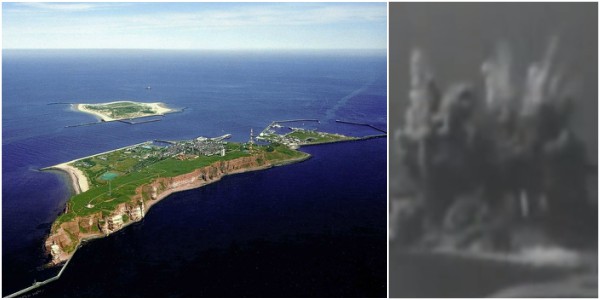In the aftermath of WWII, remaining supplies of explosives and munitions across the continent were matched only by the anger and resentment of the European people.
Germany still owned a vast amount military equipment, and the Allies were fearful that it could be used again under some new Fuhrer.
Something, they decided, needed to be done in order to remove the possibility of a third German war. So why not have some fun while destroying it? Target: a tiny island of Heligoland.
Heligoland is a small archipelago in the North Sea, located some 30 miles off the German coastline. As a historical place, it dates back to the Roman age when historian Tacitus used to describe it as “the columns of Hercules”.
The very name of this island is a variance of the older name, Heyligeland, meaning “holy land”.
Its minuscule population of some 1,000 inhabitants is predominantly of Frisian ethnicity. They have long been associating their homeland with the old Norse god of justice and reconciliation, Forseti. As it would turn out, justice and reconciliation are just what they have been craving for generations.
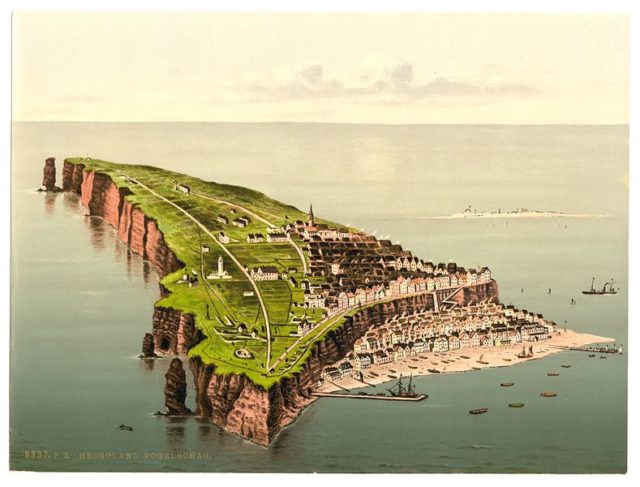
Throughout history, the strategic position of Heligoland made it a target of various empires. Initially inhabited by Frisians, in 1402 it came under the rule of the dukes of Schleswig-Holstein. In 1714, the Danes took over and after them the Britons in 1807, during the Napoleonic war.
Towards the end of the century, they traded it with Germans for the Zanzibar region in Africa. The German Empire got to control the new Kiel Canal, while the UK secured the control over East Africa.
This game of Risk continued with Germany evacuating the population and heavily fortifying the island in the preparation of the Great War.
It is no coincidence that the first naval battles of WWI were fought near Heligoland. When the war ended, the islanders returned home and turned it into an upper-class resort. But this period of prosperity wouldn’t last for long.
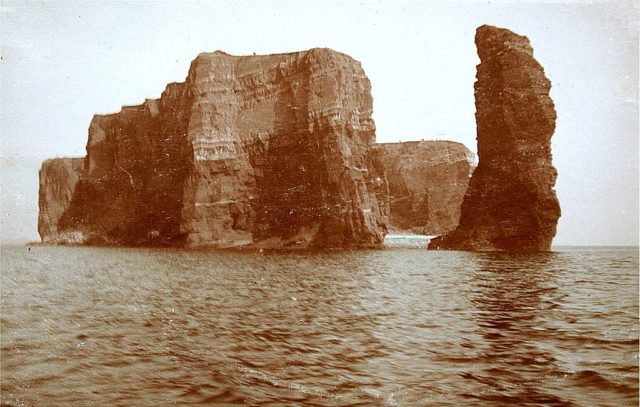
Hitler once again turned Heligoland into a naval base, with underground bunkers, long tunnels, and a submarine dock. Already in 1939 had Britain tried to bomb it, but to no avail. Between December of 1939 and January of 1940, it lost 24 RAF bombers and three submarines. They turned their focus back on Heligoland only during the final phase of the war.
After Germany lost the war, it had to give up the island once again. And the UK subsequently decided to destroy its military infrastructure once and for all. Even if it risked sinking this longstanding historical site to the bottom of the sea.
On 18th of April 1947, explosives were piled up on the island and within its 14 miles of bunkers, ready to be blown up. People living 40 miles away had been told to leave their windows opened, so as to avoid implosion. Then at 1PM, the clock ticked doom.
With 4,000 torpedo heads, 9,000 depth charges and more than 91,000 shells – all in all some 6,700 tons of explosives – set aflame, a 40-mile-tall black mushroom cloud rose above Heligoland and shook the island to its core. The detonation, a third of what had happened in Hiroshima two years before, was registered as far away as Sicily.
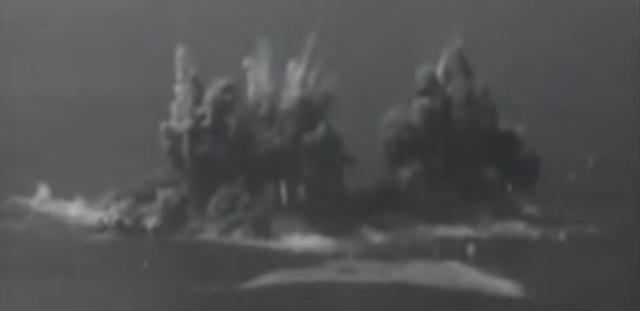
A part of the island sunk for good, but the island itself survived the most brutal non-nuclear explosion in human history, which became known as the “British Bang”.
This explosion was overpowered only just in 1985 when the US Defense Nuclear Agency conducted the “Minor Scale” detonation test.
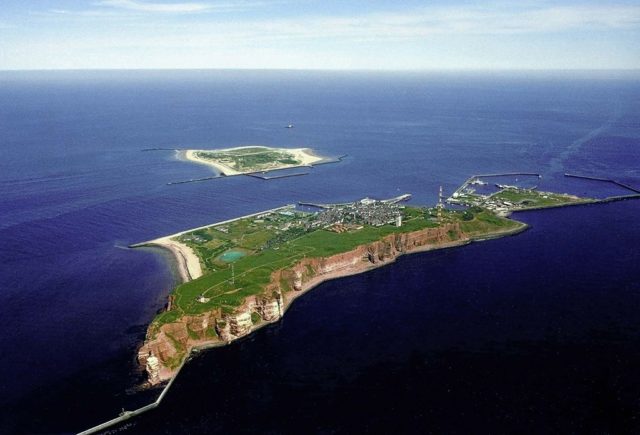
After several years of protests, the UK gave Heligoland back to Germany in 1952. Its refugee population was finally allowed to return to what was left of their indestructible island.
Today, Heligoland is once again a popular holiday resort, with the crater being the most popular site. In the end, the Frisians might have found justice and reconciliation after all.
